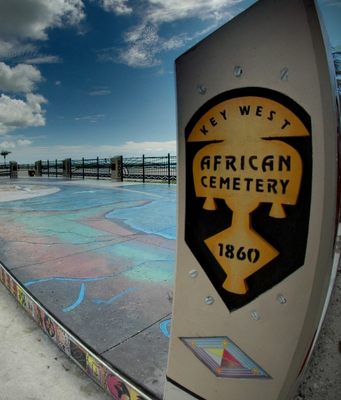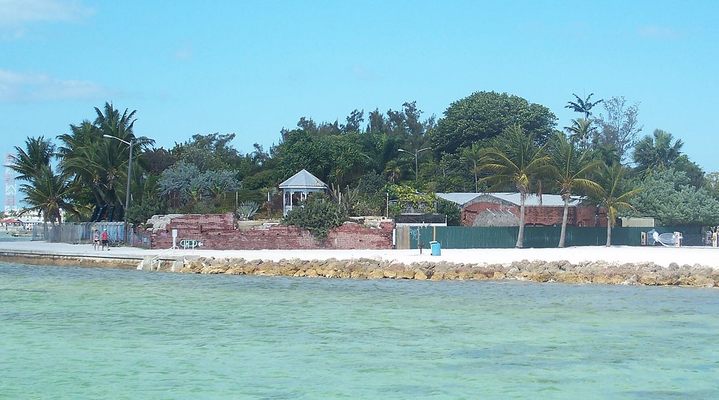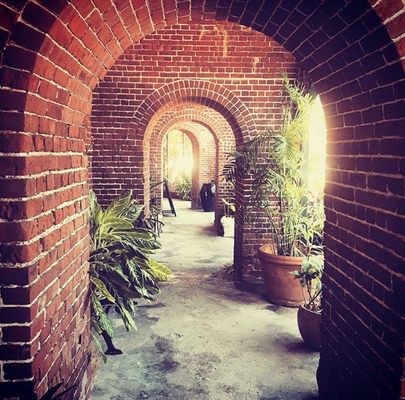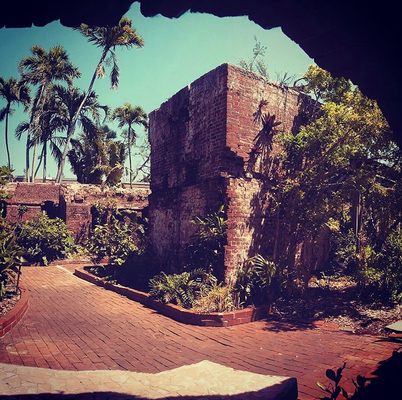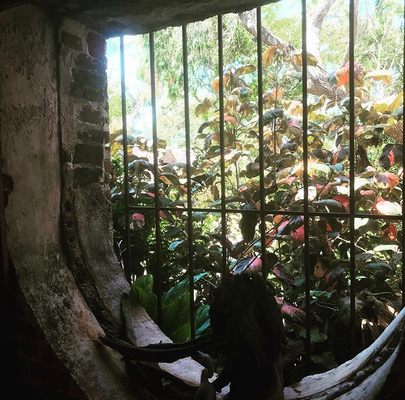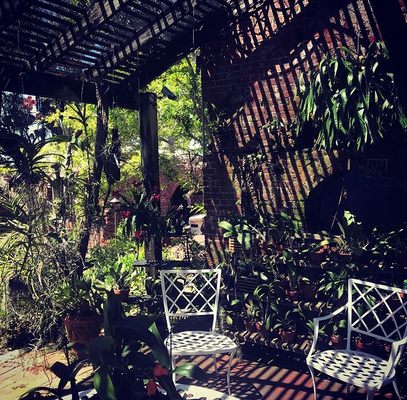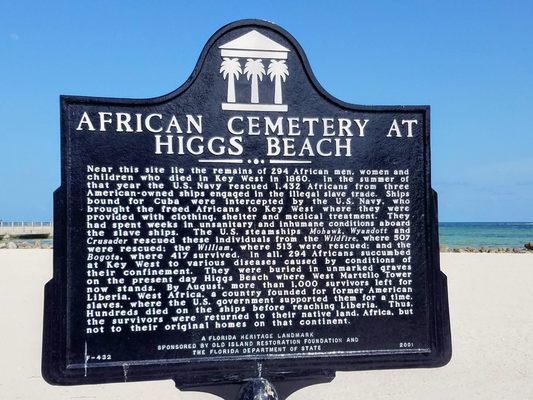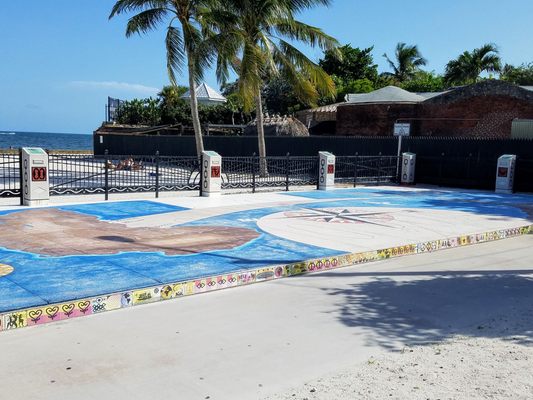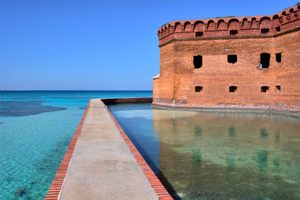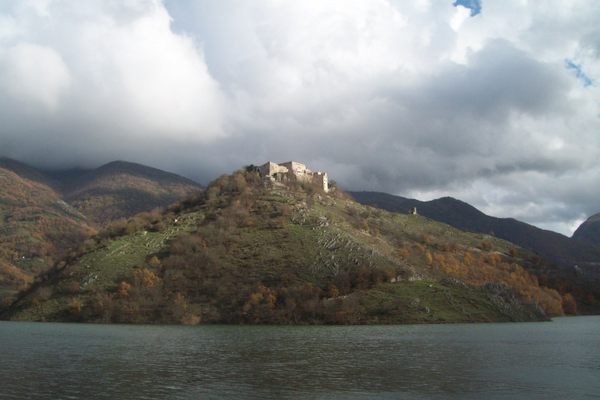About
In 1860, off the coast of Key West, the U.S. Navy intercepted three ships bound for Cuba that were holding 1,432 African men, women, and children. The American ships were engaged in the illegal transatlantic slave trade, and were forced to relinquish their human cargo.
These refugees were brought to Key West, where they were provided with food and clothing. Housing and a hospital were built to provide the nearly 1,500 people with medical care and shelter. Traumatized, depleted and seriously ill due to appallingly unsanitary and inhumane conditions aboard the slave ships, 294 people succumbed within three months of rescue. The African refugees that perished on Key West were interred that summer, and then largely forgotten.
Two years later, during construction of the West Martello Tower fort, soldiers encountered some human remains, which were relocated 40 feet down the beach, and forgotten once again. Construction continued. Warfare, lack of funds, and other complications prevented the fort’s completion, but it was still utilized during the Civil War, Spanish-American War, and World Wars I and II. By 1947, the ruined fort was considered an eyesore and slated for demolition, but valiant efforts by Florida Rep. John Allen yielded a collaboration between the county and the Key West Garden Club, which maintains it to this day.
The graves, comprising the only known cemetery of African refugees (as opposed to those of enslaved people), lay forgotten until 2002, when an expert in radar detecting subterranean sites was brought in to pinpoint exactly where the graves were located. Extensive discoveries of a singular nature caused the African Cemetery at Higgs Beach to be listed on the National Register of Historic Places as a place of “unique archaeological significance.” Pedestals bearing plaques and adorned with Adrinkas symbolizing slavery were placed, and tribal leaders consecrated the site. An African temple and obelisk are to be built within the next few years.
Visitors to the fort are treated to birds and lizards scampering through lush foliage and tropical flowers while walking through the ruins, and can get out of the sun under vine-wrapped arbors, drapes of strangler figs, and inside the small museum. And a stroll outside the iron fence enclosing the fort leads directly to the beach cemetery, where guests can pay their respects.
Related Tags
Know Before You Go
Free entry. Free parking on premises. This is one of the only activities on Key West which does not require a fee; it's perfect for solo adventurers, couples and families. The terrain is uneven in places, due to old bricks and roots. There are bottle-filling stations to encourage reuse and reduce waste. As the site relies heavily on donations, please consider making a contribution to help maintain the gardens, grounds, and graveyard.
History note, if you too are confused about this. In 1860, owning slaves was not illegal but transporting slaves was outlawed in 1820. That is why the kidnapped Africans who were rescued were able to remain freemen.
Community Contributors
Added By
Published
January 7, 2019
